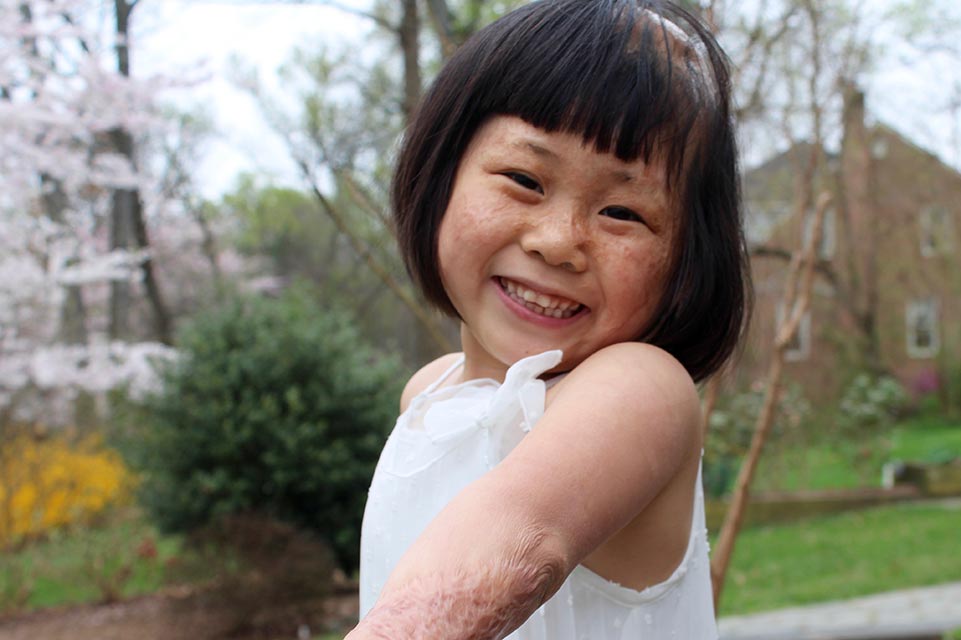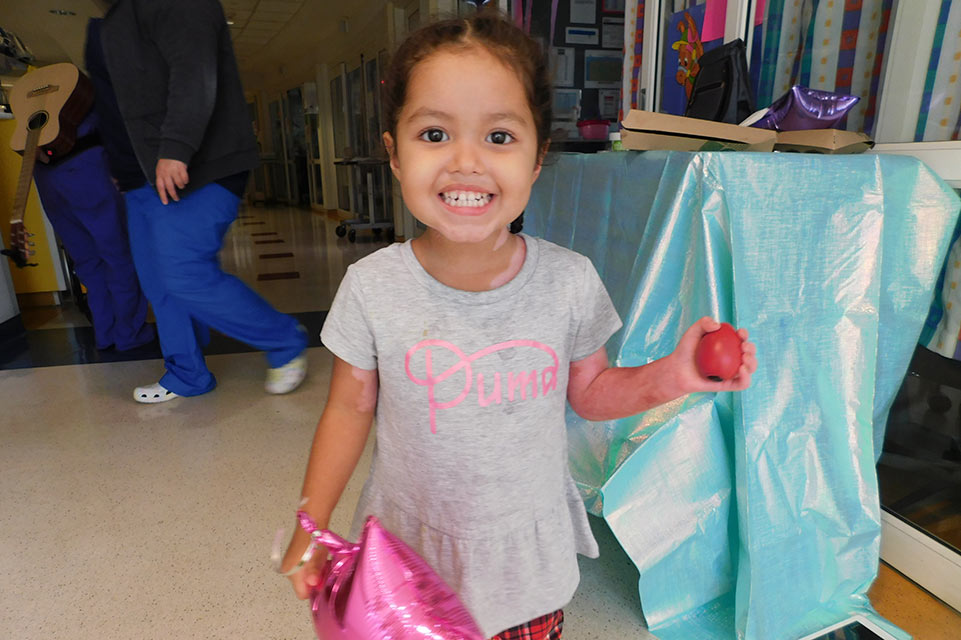Shriners Children’s Dietitians Understand the Unique Nutritional Needs of Children with Burn Injuries

An important aspect of burn care is understanding the specific nutritional needs of a child with a burn injury.
Shriners Children’s Boston dietitians Kathy Prelack, Ph.D., RD, and Jennifer Shiel, MS, RD, are vital members of a patient’s care team. They have the training and expertise to develop individualized treatment plans for children based on the severity of their burn injury.
Burn injuries can result in one of the largest nutritional impacts to the body, particularly for children. Hypermetabolism, or a metabolic rate much higher than normal, occurs immediately after a burn injury. This creates an increased need for calories, protein and micronutrients in order to promote healing. Hypermetabolism can be made worse by surgical procedures, pain and anxiety. The larger the burn size, the greater the impact. Therefore, it is important to start nutrition within 24-48 hours after a burn injury to counteract this hypermetabolic state. This state can last for up to two years after a burn injury, and can result in malnutrition. The clinical nutrition team is therefore involved from the start to determine a nutrition care plan unique to each patient, and participates in daily rounds in order to best facilitate ensuring that patients’ increased nutritional needs are met.
Children in particular are more vulnerable to malnutrition, as they often have fewer nutritional reserves, are still growing, and require nutrition for both growth and healing after a burn injury. Malnutrition has the potential to negatively affect a child’s recovery, including wound healing, infection rates and length of hospital stay.
The Boston nutrition team uses standardized criteria from the Academy of Nutrition and Dietetics and the American Society for Parenteral and Enteral Nutrition to determine if a child is suffering from malnutrition. This criteria classifies growth measure indicators such as weight for length/height or body mass index for age and their Z scores. The Z score represents how close or far a patient is from the preferred standards. From there, patients can be determined to be mildly, moderately or severely malnourished based upon how far below they may be from the standard. Once a determination of malnutrition is made, the team develops a comprehensive nutrition plan in order to safely initiate and maximize necessary nutritional support.

It is often challenging to meet high calorie, protein, micronutrient needs of pediatric burn patients, in particular when they are also malnourished, so a variety of strategies are often used. For children with smaller-sized burn injuries who are able to eat, the nutrition team focuses on maximizing their intake with high calorie and protein foods. They often rely on oral nutrition supplement drinks, as well as homemade nutrient-dense shakes, to help them meet their nutritional goals. The team as a whole works together to collectively help patients meet increased oral intake needs. The dietary team may create special patient meals that remind a patient of home, and the rehabilitation team may encourage patients to bring oral nutrition supplements to therapy sessions in the gym. Nurses will often encourage patients to drink nutrient-dense shakes between meals, and child life specialists will work to help make meal times fun.
“Sometimes oral intake alone is not enough to sufficiently meet a child’s increased nutrient needs,” shared registered dietitian Jenny Shiel. “For patients who are consistently below their intake goals, or for patients with larger burn injuries who are unable to initially meet needs by mouth, especially those who are malnourished, we use nutritional support. We can use tube feeding (provision of a formula via feeding tube into the stomach or intestines) or parenteral nutrition (IV nutrition), or a combination of both, to meet their increased nutritional needs.”
As noted, the clinical nutrition team is involved from the start and monitors progress to identify any nutritional challenges for patients. Daily intake and tolerance of nutrition support are assessed in combination with the larger clinical picture, and nutritional care plans are adjusted to best meet any changing patient needs.
Jenny went on to explain that for patients who are malnourished, the team uses a conservative approach to gradually increase nutritional intake to ensure patients tolerate appropriately. With close nutritional monitoring, high levels of nutritional support, and consistent follow-up, patients should be able to improve their nutritional status while progressing through the stages of their acute burn care needs and recovery.
Keep In Touch
Join our mailing list to stay up to date on everything that's happening at Shriners Children's.
